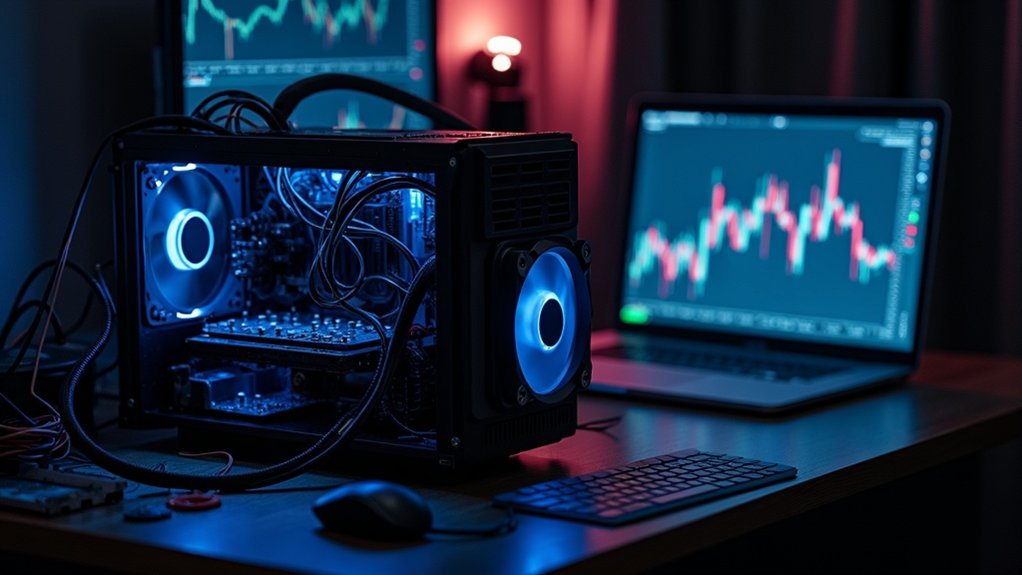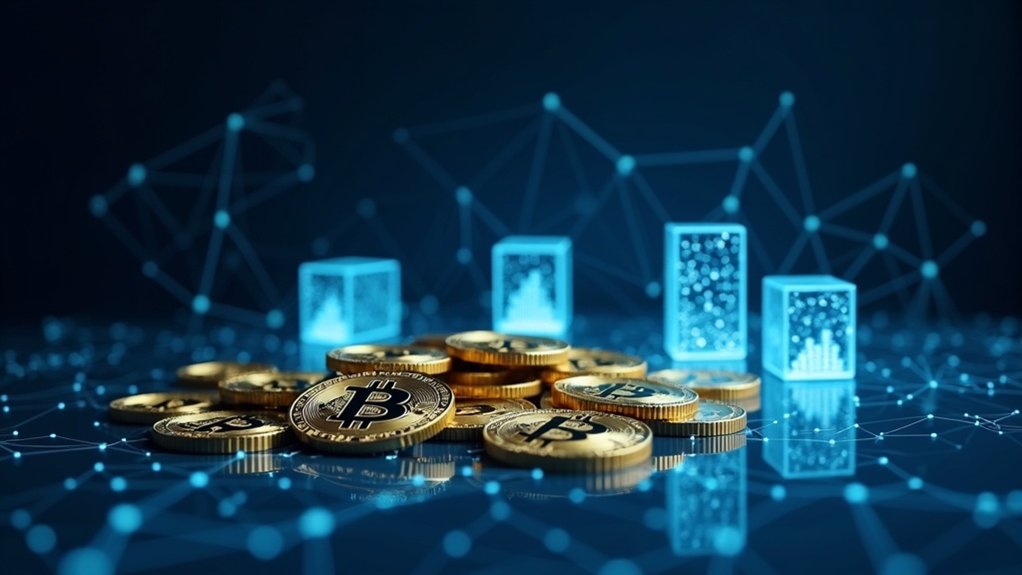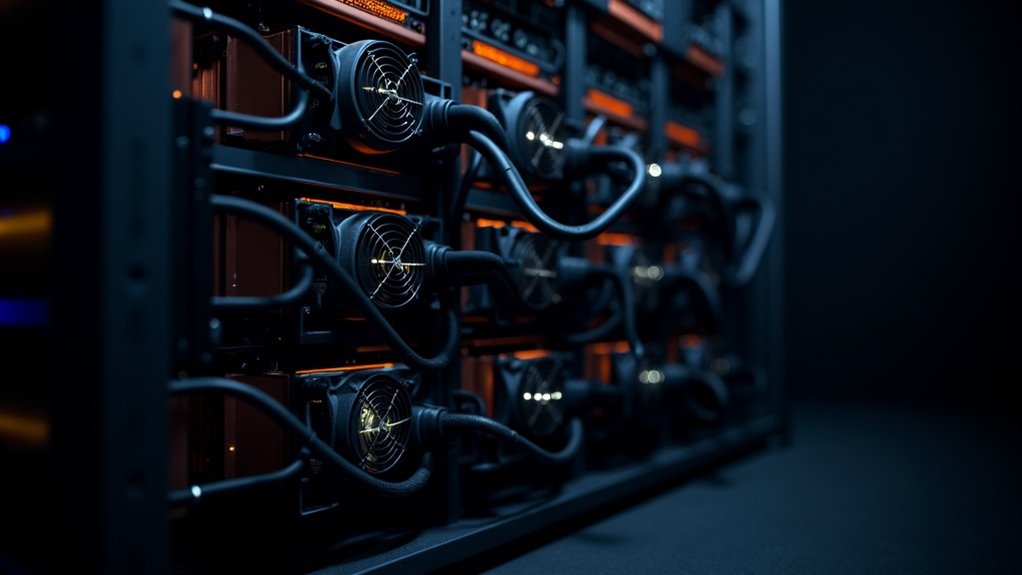Bitcoin isn’t controlled by anyone. It operates through decentralized governance where developers propose changes, miners validate transactions, and node operators enforce rules. No CEO exists. No board of directors. Just a chaotic system requiring consensus among all stakeholders for any significant updates. Anyone can participate, though technical barriers exist. The system’s seemingly messy governance? Actually its greatest strength. Bitcoin’s leaderless structure guarantees no single point of failure can bring it down.
When people talk about Bitcoin, the conversation inevitably turns to control. Who’s running this show anyway? The answer isn’t simple. Bitcoin has no CEO, no board of directors, and definitely no customer service department to call when things go wrong.
Bitcoin operates in the beautiful chaos of decentralization – everyone and no one holds the reins simultaneously.
Bitcoin’s governance involves multiple stakeholders working in an often messy democracy. Developers write code and propose changes. They’re the technical brains, but they can’t force anyone to adopt their ideas. Some people think these developers have too much power. They don’t.
Miners are the muscle. They validate transactions through that fancy Proof-of-Work system everyone keeps talking about. Mining pools concentrate this power somewhat, which makes some people nervous. These miners signal support for changes by how they mine blocks. But here’s the kicker – they still need buy-in from others.
Node operators are Bitcoin’s immune system. They run software that enforces the rules. Don’t like a change? Don’t update your node. Simple as that. These operators are the final arbiters of what Bitcoin is and isn’t. Their collective decision-making keeps the whole system honest. The process often begins with Bitcoin Improvement Proposals that outline potential protocol enhancements.
No single group can hijack Bitcoin. That’s the point. Changes require broad consensus across these different stakeholders. It’s clunky and inefficient. It’s supposed to be. Like other decentralized finance applications in the metaverse, Bitcoin operates without traditional intermediaries or central control.
Much of Bitcoin’s governance happens off-chain – in online forums, mailing lists, and Twitter arguments. There’s no formal voting process. Just a lot of shouting, debating, and eventual compromising. This approach requires full consensus among stakeholders for any significant updates or protocol changes to be implemented.
This decentralized approach frustrates those used to traditional governance. Nobody’s in charge! How will anything get done? Yet Bitcoin continues evolving, slowly and cautiously.
The system is permissionless. Anyone can participate. But technical complexity creates natural barriers. Not everyone understands cryptographic signatures or distributed systems architecture.
Bitcoin’s governance may seem chaotic, but that’s its strength. No central authority means no single point of failure. No one controls Bitcoin because everyone does. That’s what makes it revolutionary. That’s what keeps it alive.
Frequently Asked Questions
Can Governments Shut Down Bitcoin Completely?
No, governments can’t completely shut down Bitcoin. Its decentralized network spans globally, with no central point of failure.
Try as they might, officials face an impossible task—they’d need simultaneous worldwide coordination to target thousands of nodes.
Sure, they can regulate exchanges or ban conversions to fiat currency, but the Bitcoin protocol itself? Untouchable.
China tried banning it in 2021. Result? Mining shifted elsewhere, trading continued.
Bitcoin just doesn’t care about government shutdowns.
What Happens if All Bitcoin Miners Suddenly Stop Mining?
If all miners suddenly quit, Bitcoin freezes.
No new blocks, no transaction confirmations.
The whole network grinds to a halt – just stuck there, waiting.
Security would collapse since nobody’s solving those proof-of-work puzzles anymore.
Double-spending attacks? Suddenly possible.
The difficulty adjustment mechanism would stop working too.
Without miners, Bitcoin’s trustless model falls apart.
Users would be left hanging, their transactions unconfirmed.
Recovery would require miners to return, whenever that might be.
Not a pretty picture.
How Does Bitcoin Resolve Internal Governance Conflicts?
Bitcoin resolves governance conflicts through several mechanisms. The longest chain rule automatically settles competing blocks without human intervention.
Community consensus drives protocol changes, with miners voting through their computing power. Sometimes, hard forks occur when agreement fails—Bitcoin Cash split off this way.
No central authority exists. Smart contracts handle some disputes automatically.
For major disagreements? The community simply fractures. Not elegant, but effective. Democracy in action, crypto-style.
Can Bitcoin’s Code Be Changed Without Majority Consensus?
No, Bitcoin’s code cannot be effectively changed without majority consensus.
Any attempt at unilateral modification simply creates a separate fork that the network can reject. Non-consensus changes fail to propagate across the majority of nodes.
Someone could technically alter their own version, sure. But without widespread node adoption? Dead on arrival.
The decentralized nature guarantees no single entity—not developers, miners, or businesses—can force changes upon the network.
That’s the whole point.
Who Audits Bitcoin’s Security and Operation?
Bitcoin’s security and operation aren’t audited by any single entity. Instead, multiple parties participate in ongoing oversight:
Independent cybersecurity firms conduct third-party assessments when hired.
The open source community constantly reviews protocol code for flaws.
Cryptocurrency exchanges perform internal audits of their Bitcoin holdings.
Blockchain analysis companies track on-chain activity.
It’s a decentralized approach to security. No central authority exists.
The system relies on thousands of eyes scrutinizing the code and network.
Pretty fitting for a decentralized currency, right?









